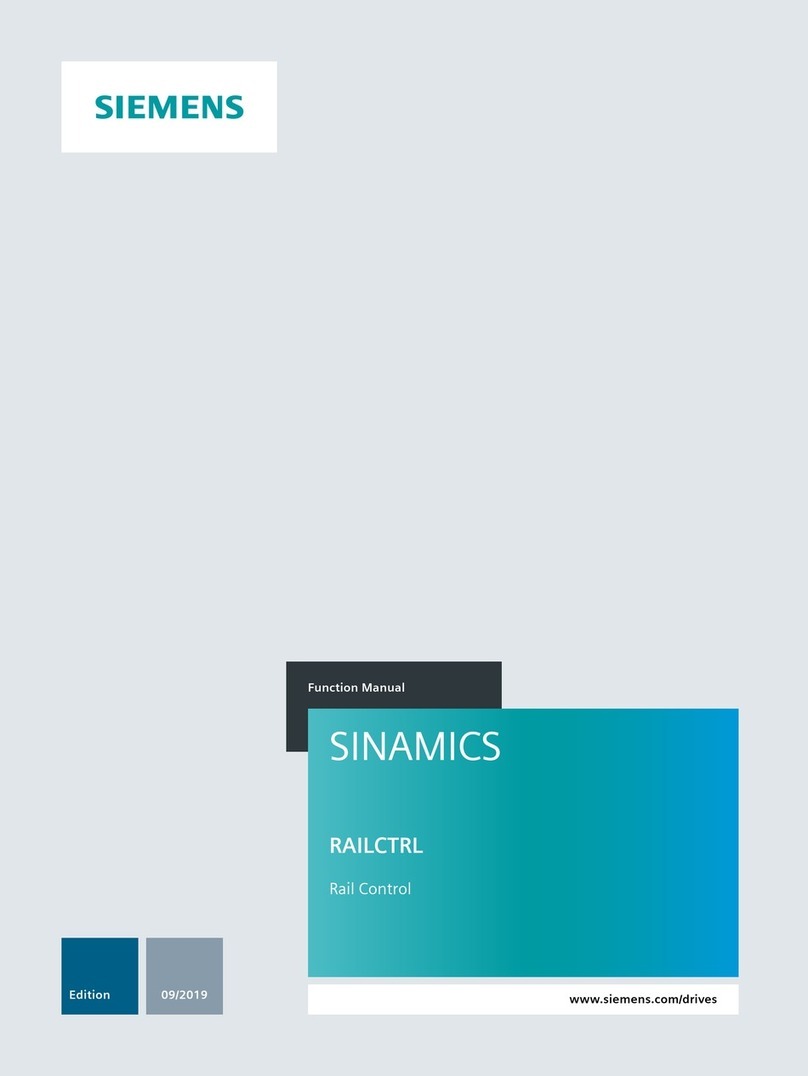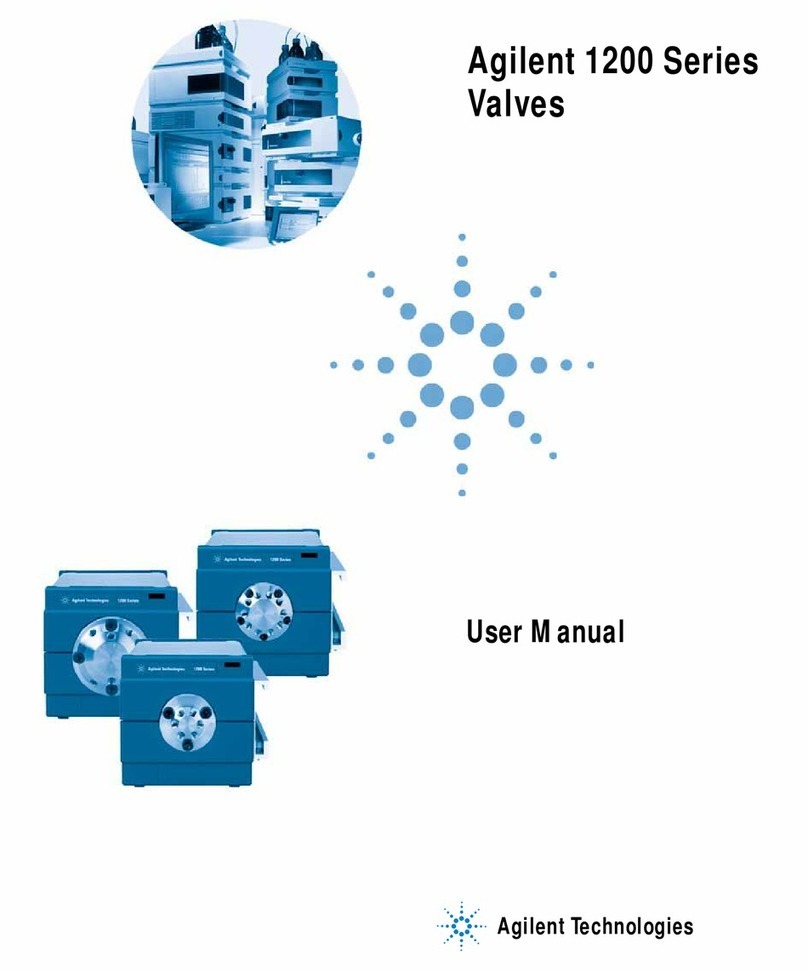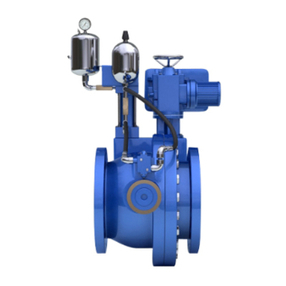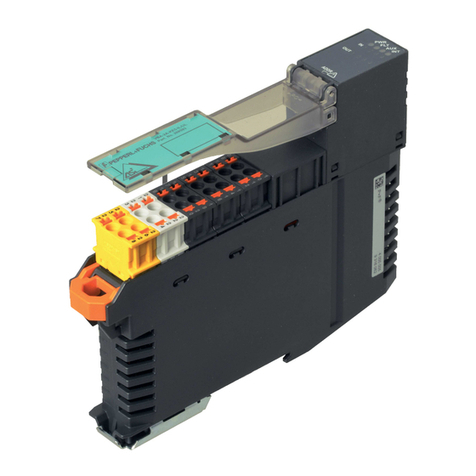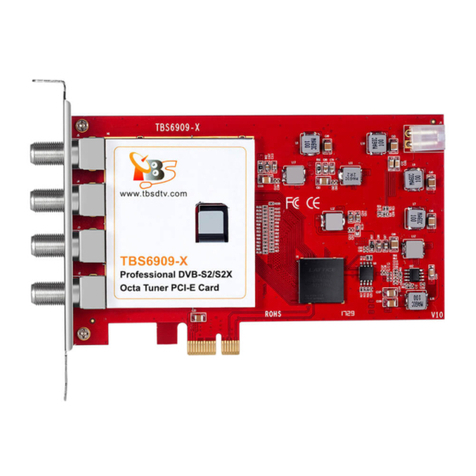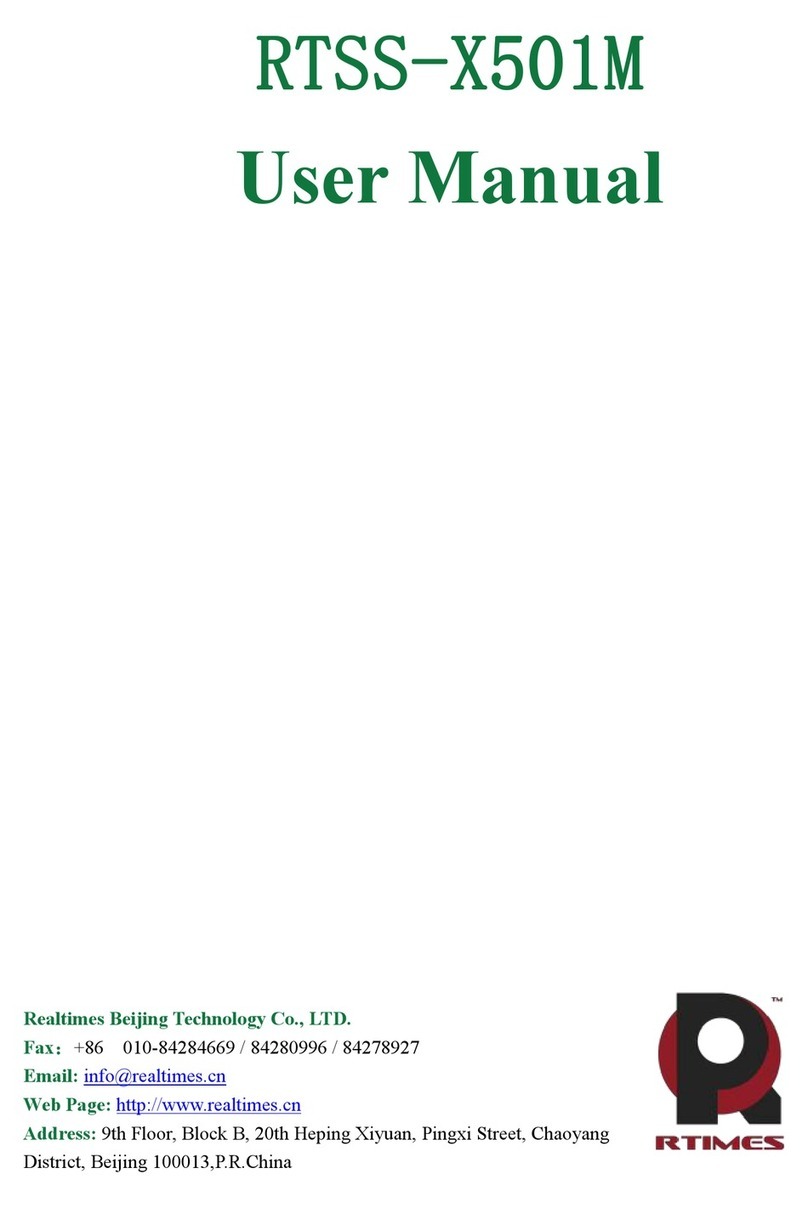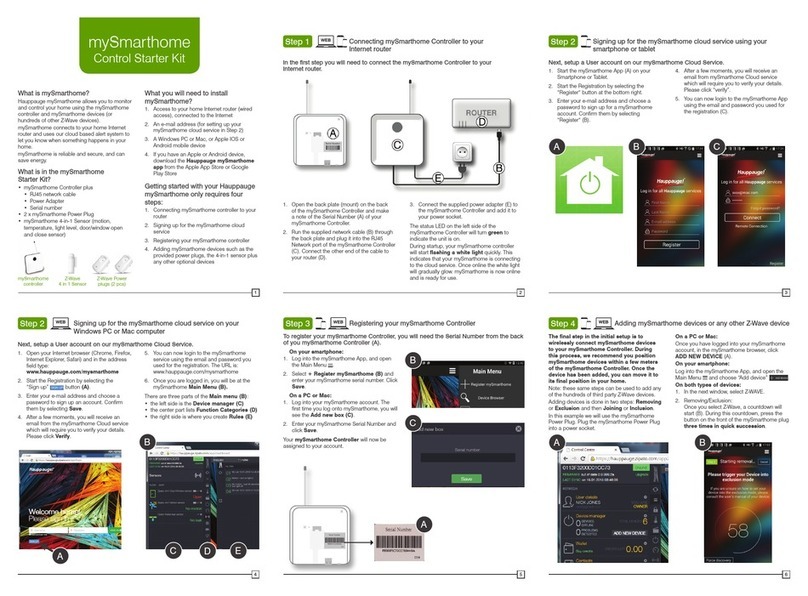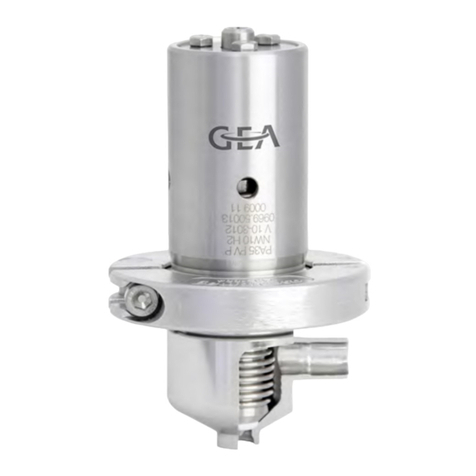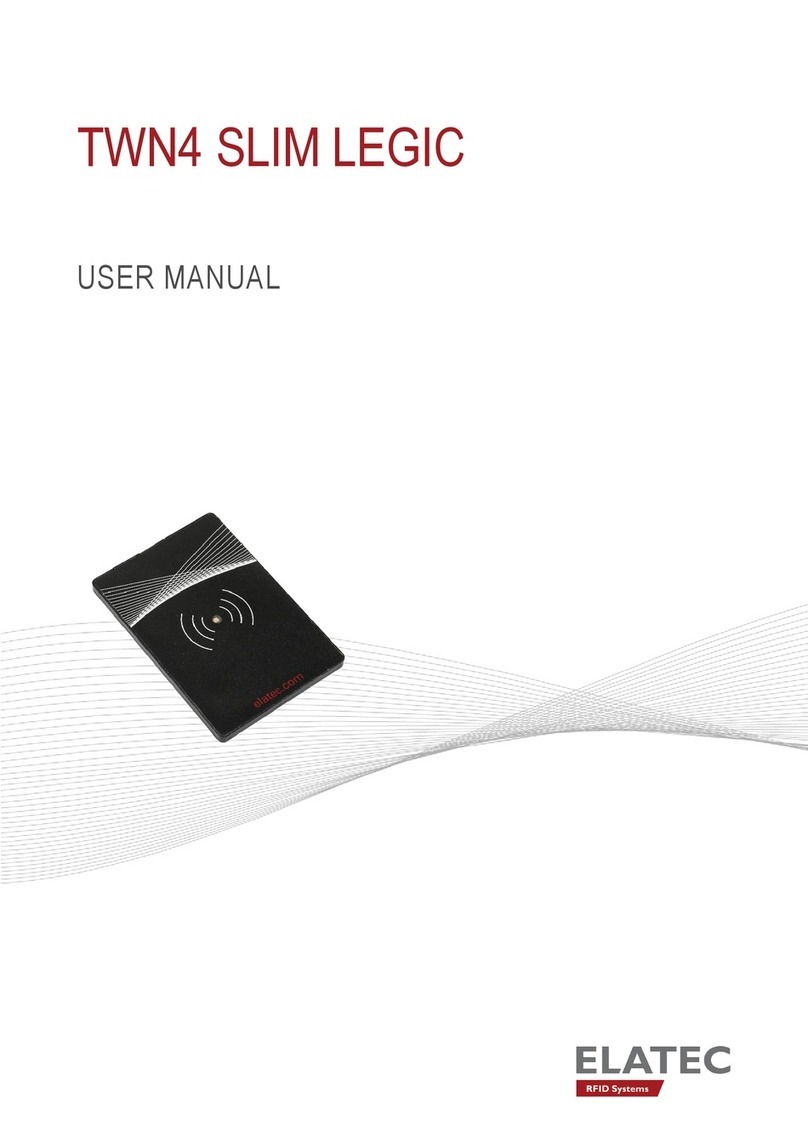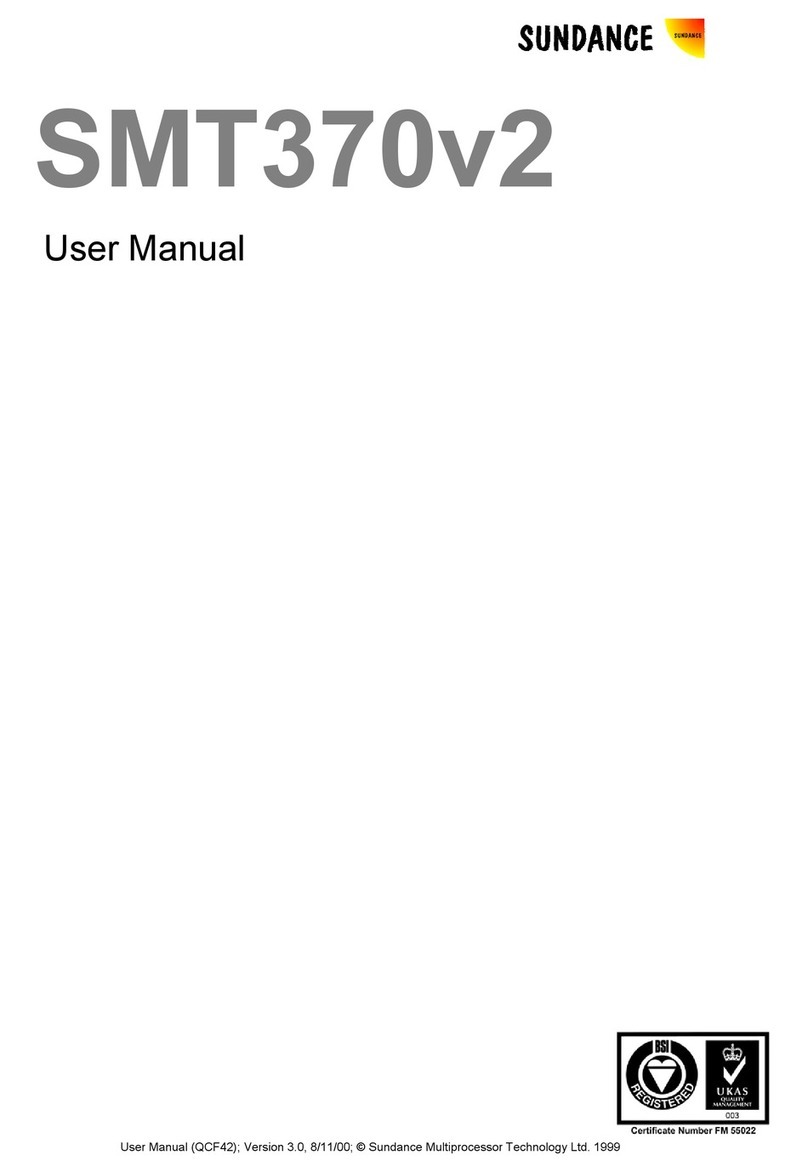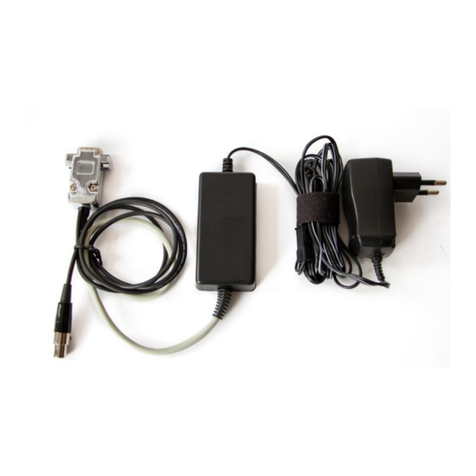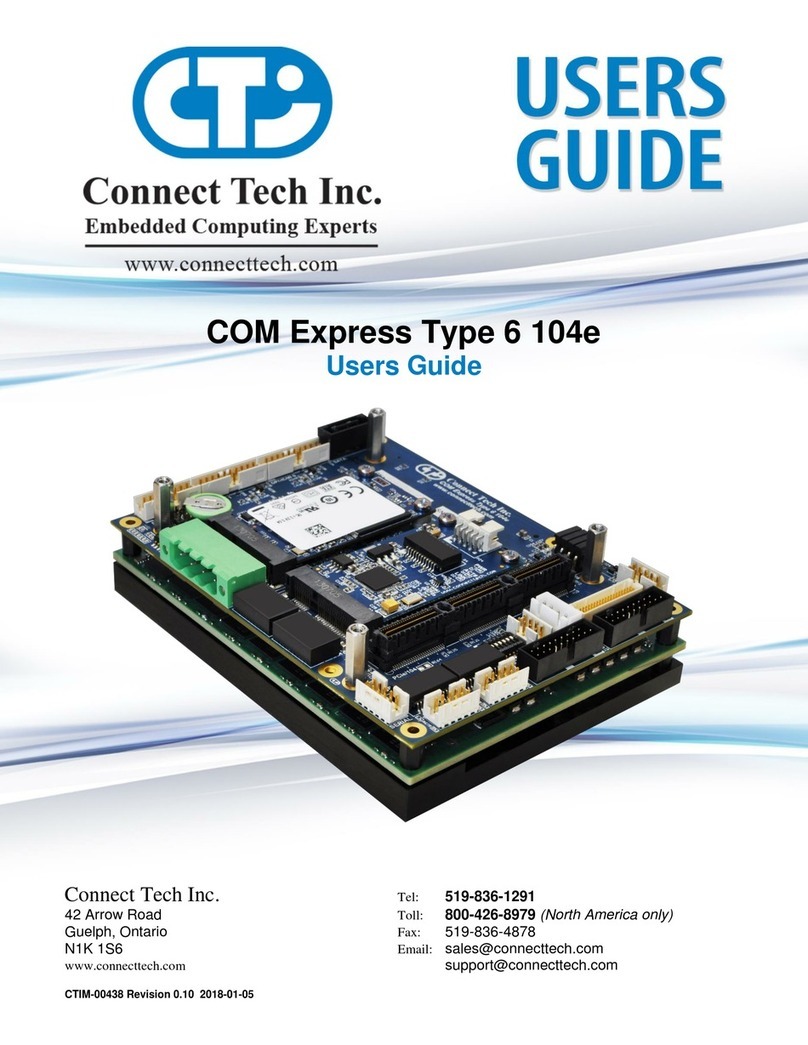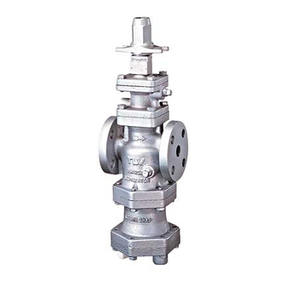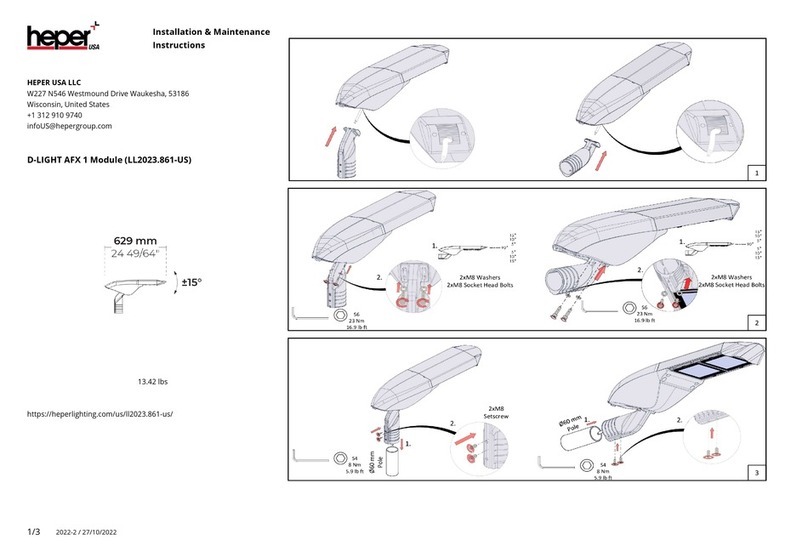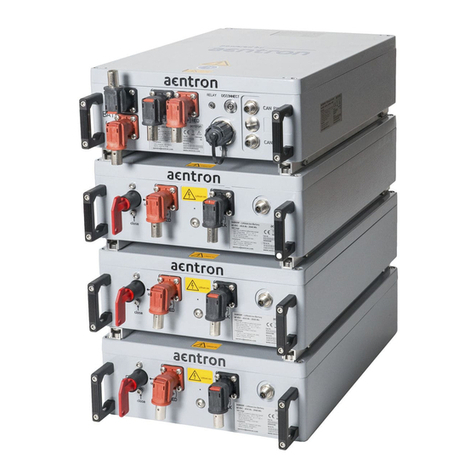Profibus T1H-PBC User manual

T1H-PBC
PROFIBUSTM I/O
system overview
If you are using a PROFIBUS™ controller
network, the Terminator I/O sub-system
will help further reduce the cost of your
overall application. The T1H-PBC module
allows the micro-modular Terminator I/O
sub-system to be linked with a PROFIBUS
master controller. PROFIBUS is a control
bus that provides a common method
to connect automation equipment with
devices on a single network. This standard
communications media is referred to as
PROFIBUS and significantly reduces hard-
wiring costs. PROFIBUS provides specifica-
tions for information exchanged between
nodes, such as controller data associated
with low- level device and configuration
parameters individually related to system
operations.
PROFIBUS allows 32 stations per segment.
Segments vary in length depending on
the desired transmission speed. The
maximum speed is achieved on a segment
100 meters (327 feet) in length. Our
PROFIBUS-DP Slave represents a single
station. Repeaters also count as stations
and are used to extend the network to
greater distances. Our PROFIBUS module
supports baud rates of 9.6 Kbaud to 12
Mbaud depending on the network length.
Here’s how it works:
The T1H-PBC module is a PROFIBUS
slave, which can be plugged into
the network interface position of the
Terminator I/O micro-modular family of
I/O bases. This module reports all the
identification data, diagnostic information,
and parameters that control the module
operation. The T1H-PBC module scans
and reports all discrete and analog I/O
data to a PROFIBUS master. The exter-
nally-powered AC Terminator I/O base
units contain a 24VDC power supply for
simple wiring of sensors and actuators
into the Terminator I/O modules, and for
controlling them with a PROFIBUS master.
Using our PROFIBUS I/O sub-system
will increase installation flexibility as well
as save on wiring costs. The T1H-PBC
module supports all Terminator discrete
and analog I/O modules.
The T1H-PBC also offers the following
features:
• Cost-effective: With a single network for
devices, hardwiring costs are reduced.
• Easy connectivity: Low-cost installation is
easy to implement and maintain.
•Diagnostics: The PROFIBUS slave offers
advanced error diagnostics not commonly
available in traditional systems.
• High baud rates: Response time is 10 ms
per device
• LED Indicators: These provide quick indi-
cation of Terminator power and operating
mode.
Profibus Base Controller
MODULE STATUS
LINK ACTIVE
LINK GOOD
ERROR
P
R
O
F
I
B
U
S
P
O
R
T
PROFIBUS™ Slave
Specifications
Module Type PROFIBUS Network Interface Module
Max. Expansion 126 stations, 32 stations per segment, 9 repeaters in a row
Max. I/O Points per Controller
244 Input Bytes (analog or discrete)
244 Output Bytes (analog or discrete)
as specified by the PROFIBUS DP Specification
Communications RS-485 PROFIBUS, PROFIBUS-DP.
Baud rate selectable from 9.6 Kbaud to 12 Mbaud.
Module Connectors PROFIBUS 9-pin D-shell, RJ-12 serial (for firmware update only)
Internal Power Consumption 530mA maximum at 5VDC (supplied by base power supply)
Operating Environment 0ºC to 60ºC (32ºF to 140ºF), 5% to 95% humidity
(non-condensing)
Manufacturer Host Automation Products, L.L.C.
Please Note:
1. Terminator I/O PROFIBUS slave network interface mod-
ule T1H-PBC is a PTO-certified PROFIBUS-compliant
slave I/O interface product.
See www.profibus.com for more information.
2 For use with Think & Do Software, we recommend the
SST PROFIBUS PCI Master Card, part number
5136-PFB-PCI. (AutomationDirect does not provide this
interface).
See www.mysst.com for more information.
tFED-61 Universal Field I/O
.

ERNI ERbic
connectors
for
PROFIBUS
networks
Connectors are
available for the PROFIBUS Base
Controller. They are available in
standard node and standard termi-
nation styles with vertical cable entry
for Terminator I/O.
Horizontal entry
cable
Vertical
entry cable
Contact A Contact B
Shield tied
Bar Contact A Contact B
MODULE STATUS
LINK ACTIVE
LINK GOOD
ERROR
H
Termination
Female
Male
Node
5
4
3
2
1
9
8
7
6
5
4
3
2
1
9
8
7
6
PROFIBUS Slave
Recommended Cables
Siemens 6XV1 830 0AH10
Belden 3079A
ERNI ERbic Connectors
Part
Number Price Description Device
103658
PROFIBUS
certified standard
node
vertical connector.
9-pin male D-sub
Terminator I/O
T1H-PBC or any
PROFIBUS ISA/
PCI Personal
Computer
Master/Slave
Card
103659
PROFIBUS
certified standard
termination
vertical connector
9-pin male D-sub
Terminator I/O
T1H-PBC or any
PROFIBUS ISA/
PCI Personal
Computer
Master/Slave
Card
Terminator I/O Modules Supported
Discrete Types Analog Types
8-point DC Input 8-channel Current Input
8-point AC Input 8-channel Voltage Input
16-point DC Input 8-channel Current Output
16-point AC Input 8-channel Voltage Output
8-point DC Output 16-channel Current Input
8-point AC Output 16-channel Voltage Input
16-point DC Output 16-channel Current Output
16-point AC Output 16-channel Voltage Output
8-point Relay Output
16-point Relay Output
Baud
Max.
Segment
Length
Max.
Expansion
Feet Meters Feet Meters
9.6 Kbps 3278 1000 32786 10000
19.2 Kbps 3278 1000 32786 10000
93.75 Kbps 3278 1000 32786 10000
187.5 Kbps 3278 1000 32786 10000
500 Kbps 1311 400 13114 4000
1.5 Mbps 655 200 6557 2000
3 Mbps 327 100 3270 1000
6 Mbps 327 100 3270 1000
12 Mbps 327 100 3270 1000
www.lamonde.com-fieldIO Universal Field I/O tFED-62
.

It is important to understand the installa-
tion requirements for your Terminator I/O
system. This will ensure that the Terminator
I/O products work within their environ-
mental and electrical limits.
Plan for safety
This catalog should never be used as a
replacement for the technical data sheet
that comes with the products or the
T1K-INST-M Installation and
I/O Manual (available online at
.) The tech -
nical data sheet contains information that
must be followed. The system installation
should comply with all appropriate elec-
trical codes and standards.
Unit dimensions and
mounting orientation
Use the following diagrams to decide
if the Terminator I/O system can be
installed in your application. Terminator
I/O units should be mounted horizon-
tally. To ensure proper airflow for cooling
purposes, units should not be mounted
upside-down. It is important to check the
Terminator I/O dimensions against the
conditions required for your application.
For example, it is recommended to leave
2” depth for ease of access and cable
clearance. However, your distance may
be greater or less. Also, check the instal-
lation guidelines for the recommended
cabinet clearances.
48mm
(1.89in)
80mm
(3.15in)
80mm
(3.15in)
48mm
(1.89in)
80mm
(3.15in)
48mm
(1.89in)
89mm
(3.5in)
80mm
(3.15in)
83.3mm
(3.28in)
Power Supply Network Interface Module Half-size I/O Module
with Base
System DepthFull-size I/O Module
with Base
Dimensions and Installation
See the Enclosures
section for an enclosure that may
be suitable for your application
Terminator I/O Environmental Specifications
Ambient Operating Temperature 32°F to 131°F (0°C to 55°C)
Storage Temperature -4°F to 158°F (-20°C to 70°C)
Ambient Humidity 5% to 95% (Non-condensing)
Atmosphere No corrosive gases. The level of environmental
pollution = 2 (UL 840)
Vibration Resistance MIL STD 810C, Method 514.2
Shock Resistance MIL STD 810C, Method 516.2
Voltage Withstand (Dielectric) 1500VAC, 1 minute
Insulation Resistance 500 VDC, 10 Mq
Noise Immunity
NEMA ICS3-304
Impulse noise 1µs, 1000V
FCC class A
RFI (144MHz, 430MHz 10W, 10cm)
Agency Approvals UL, CE, FCC class A, NEC Class 1 Division 2
tFED-53 Universal Field I/O
.

I/O Module Installation
Grip the locking handle, as shown, and pull gently to
eject the I/O module from its base. The module will slide
out for easy replacement. This procedure does not apply
to network interface modules or power supplies, which
have integral bases.
Hot-swappable
I/O modules
You can remove I/O
modules under power,
but exercise caution while
doing so. Do not touch the
terminals with your hands
or any conductive material.
Always remove power when
possible.
Removing I/O modules
is a snap
I/O module installation
Terminator I/O modules feature separate
terminal bases for easy installation.
To install I/O modules:
1. Slide the module into its terminal base
(until it clicks into position)
2. Hook upper DIN rail tabs over the top of DIN
rail, and press the assembly firmly onto the
DIN rail.
3. Slide the module along the DIN rail until it
engages with the adjacent module.
DN-ASB-1
angled mounting
bracket
Optional angled support bracket
raises and tilts the mounting rail for
easier access and wiring. Use with
35mm DIN rail. See the Connection
Systems in this catalog for details.
Great for mounting
in upper locations
Great for mounting
in lower locations
1
2
3
www.lamonde.com-fieldIO Universal Field I/O tFED-54
.

Calculating the power budget
To calculate the power budget, read the
available power (current rating) from the
Power Supply Specifications table and
subtract the power consumed by each
module to the right of the power supply.
Do not include modules to the right of an
additional power supply.
Power supplies
The Terminator I/O product line offers
two power supply options: AC or DC.
The power supplies are always positioned
to the left of the modules to which they
supply power. Consult the system configu-
ration examples and the power budgeting
example for more information on posi-
tioning power supplies.
This power supply powers these three I/O
modules
This power supply powers the network interface module and
the next two I/O modules
Power Supplies and Power Requirements
Power requirements
Power supply
specifications
Power Supply
Specifications
T1K-01AC
T1K-01DC
Input Voltage Range 110/220 VAC 12/24 VDC
Input Frequency 50/60 Hz N/A
Maximum Power 50VA 30W
Max. Inrush Current 20A 10A
Insulation
Resistance > 10Mq@ 500 VDC
Voltage Withstand 1 min. @ 1500VAC between
primary, secondary and field
ground
5VDC
PWR
Voltage 5.25 VDC 5.25 VDC
Current Rating
2000 mA max
(see current
option note
below)
2000 mA max
Ripple 5% max. 5% max.
24VDC
PWR
Voltage 24VDC N/A
Current Rating
300mA max.
(see current
option note
below)
N/A
Ripple 10% max. N/A
Fuse 1 (primary), not replaceable
Replacement
Terminal Block
(Phoenix Contact)
MVSTBW
2.5/4-ST-5.08
BK
MVSTBW
2.5/6-ST-5.08
BK
Note: 500mA @ 24VDC can be achieved by lowering the
5VDC from 2000mA to 1500mA.
Power Budget Example
Module 5VDC 24VDC
T1K-01AC +2000mA +300mA
T1H-EBC100 -300mA -0mA
T1K-16ND3 -70mA -0mA
T1K-16TD2 -200mA -0mA
T1F-08AD-1 -75mA -50mA
Remaining +1355mA +250mA
Module 5VDC 24VDC
Analog Input Modules
T1F-08AD-1 75 50*
T1F-08AD-2 75 50*
T1F-16AD-1 75 50*
T1F-16AD-2 75 50*
T1F-16RTD 150 0
T1F-16TMST 150 0
T1F-14THM 60 70*
Analog Output Modules
T1F-08DA-1 75 150*
T1F-08DA-2 75 150*
T1F-16DA-1 75 150*
T1F-16DA-2 75 150*
Combination Analog Modules
T1F-8AD4DA-1 75 60*
T1F-8AD4DA-2 75 70*
* Use either internal or external source
for 24VDC
Module 5VDC 24VDC
DC Output Modules
T1H-08TDS 200 0
T1K-08TD1 100 200*
T1K-16TD1 200 400*
T1K-08TD2-1 200 0
T1K-16TD2-1 200 0
AC Output Modules
T1K-08TA 250 0
T1K-16TA 450 0
T1K-08TAS 300 0
Relay Output Modules
T1K-08TR 350 0
T1K-16TR 700 0
T1K-08TRS 400 0
Specialty Modules
T1H-CTRIO 400 0
* Use either internal or external source
for 24VDC
Module 5VDC 24VDC
Interface Modules
T1H-EBC100 300 0
T1H-PBC 530 0
T1K-DEVNETS 250 45
T1K-MODBUS 300 0
DC Input Modules
T1K-08ND3 35 0
T1K-16ND3 70 0
AC Input Modules
T1K-08NA-1 35 0
T1K-16NA-1 70 0
Adding additional
power supplies
Each power supply furnishes power only to
the network interface and I/O modules to
its right. Inserting a second power supply
closes the power loop for the power
supply to the left, while also powering
the modules to its right. Perform a power
budget calculation for each power supply
in the system.
tFED-55 Universal Field I/O
.

Expansion I/O Configurations
T1K-10CBL
T1K-10CBL-1*
Right side to left side
expansion cable
Using T1K-10CBL expansion cable
and T1K-05CBL-RR expansion cable
Expansion cables T1K-05CBL-LL
T1K-05CBL-LL-1*
Left side to left side
expansion cable
Using two T1K-10CBL expansion cables
Using T1K-05CBL-RR expansion cable
and T1K-05CBL-LL expansion cable
Using T1K-05CBL-RR expansion cable
The T1K-10CBL(-1) connects the right
side of an I/O base to the left side of
the next I/O base. A maximum of two
T1K-10CBL(-1) cables can be used per
expansion system.
The T1K-05CBL-LL(-1) connects the left
side of an I/O base to the left side of the
next I/O base. Only one T1K-05CBL-LL
(-1) cable can be used per expan-
sion system and must be used with a
T1K-05CBL-RR cable. This cable cannot
be connected to the left side of the network
interface base.
Some of the examples below show
the T1K-05CBL-RR expansion
cable. This cable is no longer
available.
Refer to the examples if you already
have these cables. If you are
purchasing new cables, we recom-
mend the T1K-10CBL(-1) cables.
The T1K-05CBL-RR connects the
right side of an I/O base to the right
side of the next I/O base. A maximum
of one T1K-05CBL-RR cable can be
used per expansion system. Note:
When this cable is used, the expan-
sion I/O assignments are from right
to left (reversed).
*Note: The (-1) versions of the expansion cables pass 24VDC through on an isolated wire. (All cables pass the 5VDC base
power.) Any local expansion DC input module configured for “internal power” (current sourcing) must either have a power supply
preceding it on the same base or, have a (-1) version cable pass 24VDC from a power supply on the preceeding base.
T1K-10CBL
T1K-05CBL-RR
(Retired Product)
T1K-05CBL-RR
(Retired Product)
T1K-05CBL-RR
(Retired Product)
T1K-05CBL-LL
In the system below, power supplies can be used anywhere.
Power supplies can be used anywhere in the first two bases,
but not in the last expansion base.
A power supply can be
used on either base.
Power supplies can be used anywhere in the first and third
bases, but not in the second base.
T1K-10CBL(-1)
Power supplies can be used anywhere in the first base, but not
in the second base.
I/O Addressing
I/O Addressing
I/O Addressing
I/O Addressing
T1K-10CBL(-1)
Do not connect a
T1K-05CBL-LL(-1)
to the left side of the
network interface base.
Cable length = 1.0m Cable length = 0.5m
T1K-05CBL-RR RETIRED
Right side to right side
expansion cable is no longer
available
www.lamonde.com-fieldIO Universal Field I/O tFED-56
.

Terminal base
specifications
Terminator I/O terminal bases are available
in screw clamp and spring clamp versions for
both half-size and full-size modules. Hot stamp
silkscreen labeling is used for numbering I/O
points, commons, and all power terminals.
Screw clamp, half-size
Screw clamp, full-size
2 and 3-wire DC input devices
using bussed 24VDC power
Use externally supplied 24VDC
power or 24VDC auxiliary power
from T1K-01AC
Spring clamp, full-size
Spring clamp, half-size
T1K-08B
T1K-16B T1K-16B-1
T1K-08B-1
Field Device Wiring and Power Options
Do not jumper modules together
to create a 24VDC bus when
using the “hot swap” feature.
See Note below.
Terminal Base Specifications
Terminal Type Screw type Spring clamp
Recommended
Torque
1.77–3.54 lb·in
(0.2–0.4 N·m) N/A
Wire Gauge
Solid:
25–12 AWG
Stranded:
26–12 AWG
Solid:
25–14 AWG
Stranded:
26–14 AWG
Field device wiring options
Power your DC input devices from the
integrated 24VDC power supply bus.
T1K-08ND3 and T1K-16ND3 DC input
modules include jumpers for selecting the
internal 24VDC power supply available
for 2- and 3-wire field devices. Clearly
labeled triple stack terminals make it easy
to wire 2- and 3-wire devices ensuring
clean wiring with only one wire per
termination.
External user supplied 24VDC power, or
auxiliary 24VDC terminals from T1K-01AC,
can be easily applied directly to one end of
the terminal rows and jumpered across each
base in the system.
This is a convenient solution for powering
analog I/O and discrete DC output
devices whose modules do not have direct
access to the internal bussed 24VDC. If
current consumption increases, simply
add additional T1K-01AC power supplies
into the system.
Hot-swap feature
The hot-swap feature allows Terminator
I/O modules to be replaced while system
power is on. Be careful not to touch the
terminals with your hands or other conduc-
tive material to avoid the risk of personal
injury or equipment damage. Always
remove power if it is equally convenient to
do so.
Note: Before hot-swapping analog or
DC output modules in a Terminator I/O
system, make sure that each of the analog
and DC output module’s 24VDC and 0
VDC base terminals are wired directly to
the external power supply individually. If
the external 24VDC and 0 VDC is jump-
ered from base to base in a daisy chain
fashion, and an analog or DC output
module is removed from its base, the risk
of disconnecting the external 24VDC and
0 VDC to the subsequent I/O modules
exists.
tFED-57 Universal Field I/O
.
Table of contents
